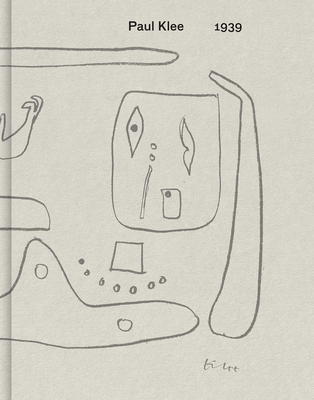Paul Klee: 1939 (Hardcover)
$60.00
This book is harder to get and may take several weeks if available. Please email info@mcnallyjackson.com with questions.
Description
The year before he died, in what was one of the most difficult yet prolific periods of his life, Paul Klee created some of his most surprising and innovative works.
In 1939, the year before his death from a long illness and against a backdrop of sociopolitical turmoil and the outbreak of World War II, Klee worked with a vigor and inventiveness that rivaled even the most productive periods of his youth. This book illuminates the artist’s response to his personal difficulties and the era’s broader realities through imagery that is tirelessly inventive—by turns political, solemn, playful, humorous, and poetic.
The works featured testify to Klee’s restless drive to experiment with form and material. His use of adhesive, grease, oil, chalk, and watercolor, among other media, resulted in surfaces that are not only visually striking, but also highly tactile and original. Not unlike a diary, the drawings are often meditative reflections on the pains and pleasures of life—their titles, among them Monsters in readiness and Struggles with himself, signal Klee’s frame of mind.
Renowned art historian Dawn Ades looks at this group of paintings and drawings in the context of their time and as indicative of a pivotal moment in art history. Moved by this late period of Klee’s oeuvre, American artist Richard Tuttle responds to specific works in the form of dialogical poems. This stunning publication highlights the novelty and ingenuity of Klee’s late works, which deeply affected the generation of artists—including Anni Albers, Jean Dubuffet, Mark Tobey, and Zao Wou-Ki—that emerged after World War II and continues to captivate artists and viewers alike today
About the Author
A pioneering modernist of unrivaled creative output, Paul Klee (1879-1940) counts among the truly defining artists of the twentieth century, exploring and expanding the terrain of avant-garde art through work that ranges from stunning colorist grids to evocative graphic productions. Klee taught for a decade, from 1921 to 1931, at the Bauhaus, the famed German art and design school, and the novelty of his work and ideas established him as one of the institution’s foremost instructors. He has often been associated with some of the most important art movements of the twentieth century, such as expressionism, cubism, and surrealism, yet his practice remained highly individualistic and distinct; it was never encapsulated by the concerns of a movement or reducible to the modernist binary of abstraction and figuration. Klee’s interests were expansive, and his art reveals a deep engagement with language, music (he was an accomplished violinist), satire, and politics, among other subjects.
Dawn Ades is professor emerita of the history and theory of art at the University of Essex and professor of the history of art at the Royal Academy of Arts. In 2013, she was made CBE for services to higher education.
Richard Tuttle’s often poetic objects defy genre through exploration of material form. Sometimes, Tuttle crafts fragile assemblages of unassuming materials, like paper wire, string, and cloth. While trespassing constraints of framing, Tuttle manages to investigate the potential of line, activating marginal space whose volume becomes expressive too. Like Paul Klee, Tuttle draws upon the other-than-conscious and the richness of the overlooked. A book of Tuttle’s collected writings from 1966 to 2019, A Fair Sampling, was published by Walther König in 2020.
Praise For…
“Klee’s wily, woozy art looms with a bleak new urgency.”
— Jason Farago
“Klee’s inventive canvases and his original approach to painting (illuminated in his extensive writings) inspired a host of famed American abstractionists, from Jackson Pollock and Adolph Gottlieb to Norman Lewis and Robert Motherwell.”
— Alexxa Gotthardt
“A visionary painter and professor”
— Nate Freeman
“Pioneering modernist”
— Ryan Waddoups
“Klee’s art, throughout, is a strange and delightful species of adventurism. Every work seems to begin anew, without a destination — or perhaps with a destination to be discovered by and by”
— Michael Glover

